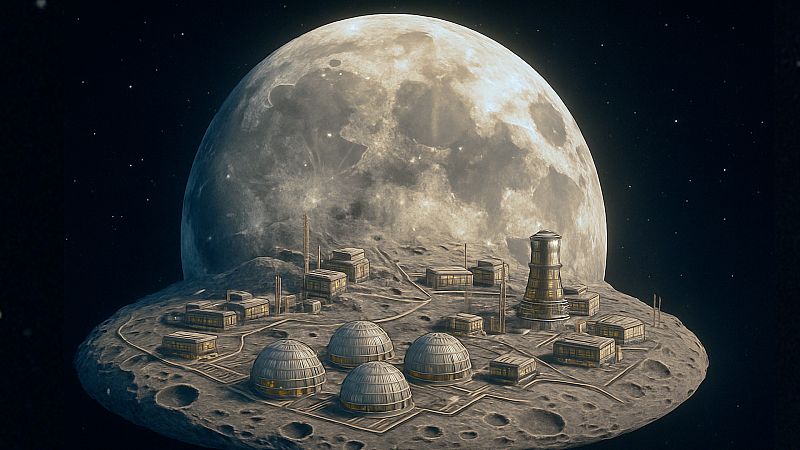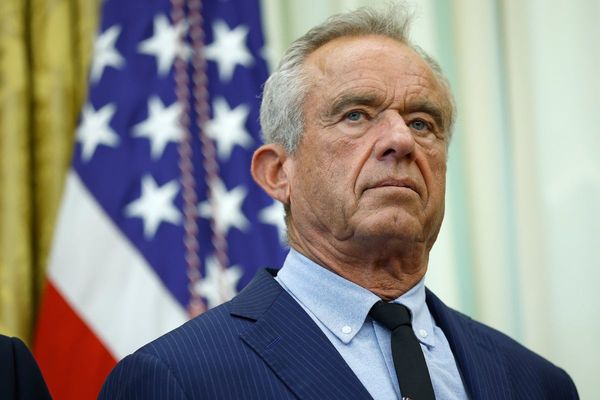
The United States is fast-tracking plans to build a nuclear reactor on the Moon in response to China and Russia's growing activity in space.
US media reported last week that Sean Duffy, NASA's interim administrator and US transportation secretary, said the country could complete the project as early as 2030. It will also be much stronger than anticipated; while previous designs assumed the nuclear reactor would have around 40 kilowatt power, it's now expected to 100 kW.
This dramatic increase in power is expected to provide stable power for future bases on the Moon.
The facility will be built as part of the international Artemis programme, overseen by NASA, which aims to send people to the Moon and prepare for future expeditions to Mars.
In addition to the nuclear reactor itself, a full supporting infrastructure – from transmission networks to energy storage – will be extremely important.
The project's acceleration heralds a new era of global competition beyond Earth.
Is the 2030 deadline possible?
According to experts, the 2030 deadline is ambitious but technically possible. NASA and the US Department of Energy are now working to develop a fission surface power system to provide at least 40 kW of power, which NASA said would be enough to run 30 households for 10 years.
Reactors have to operate reliably under extreme conditions: temperature fluctuations from daytime heat to nighttime frosts as low as -200° Celsius, no atmosphere, and limited cooling.
Reactors must therefore be sealed, safe, and able to manage heat in low pressure and lower gravity conditions.
In addition, rocket launches carry the risk of failure. The reactor would be sent in an "unactivated" state to minimise the risk of contamination in the event of a catastrophe.
Competition to establish on the Moon
Under the 1967 Outer Space Treaty, no one can claim territory on the Moon. But for technical reasons, security zones around the reactor could effectively block other countries' access to strategic areas.
"The first country to [place a reactor on the Moon] could potentially declare a keep-out zone which would significantly inhibit the United States from establishing a planned Artemis presence if not there first," Duffy said.
China is already testing its Lanyue lunar lander, which it expects to carry humans to the Moon by 2030. Working with Russia, China plans to build an International Lunar Research Station by 2035, possibly with its own nuclear plant on the Moon.
Technological partnership with Europe
European activity in lunar exploration is not limited to support for the Artemis programme. European countries are pursuing their own advanced projects that can not only inspire US ventures, but often feed directly into them.
The Italian project SELENE (Lunar Energy Systems with Nuclear Energy) involves the construction of a "Moon Energy Hub," a stable energy source on the Moon based on small energy sources known as surface nuclear reactors.
The Italian Space Agency (ASI) is also working with NASA to develop a module that could serve as a place of refuge for astronauts on the Moon.
The European Space Agency (ESA) is implementing the Moonlight programme to create a constellation of five satellites orbiting the Moon, four for navigation and one for communication. The initiative, supported by Italy and the United Kingdom, expects to support more than 400 lunar missions over the next 20 years.
Spanish technology company GMV developed the LUPIN system, which allows precise navigation on the Moon using satellite signals – similar to GPS but adapted to lunar conditions. Tests were carried out in Fuerteventura, an island off the coast of North Africa that has a landscape resembling the lunar surface.
The company Airbus is working with the ESA on a transport vehicle capable of carrying cargo to the International Space Station.
In parallel, scientists are developing the EL3 (European Large Logistic Lander), a modular lander to deliver payloads and samples to the lunar surface in support of European exploration autonomy.
The LUNA centre, a joint initiative between the ESA and Germany's aerospace centre, is under construction in Cologne. It is a 700-metre hall that replicates the Moon's surface, with a layer of rock and lighting systems that mimic the day and night cycle.
It is used to train astronauts and test robots, human-machine interaction, energy systems, and to simulate surface operations.
Return to the Moon
The space race is entering a new phase in which energy independence beyond Earth plays a key role. The lunar reactor is becoming not only an engineering project, but also a tool of strategic competition, determining technological and political superiority.
By 2030, we may witness not only the return of humans to the Moon, but also the establishment of the first permanent energy installations, which will become the foundation for a long-term human presence in space.
At the same time, questions of law, security and international cooperation arise. Although the Outer Space Treaty prohibits the "appropriation" of this natural satellite of the Earth, the practice of security zones may introduce a new form of space geopolitics.
Europe, with its wide range of projects, can become not only a partner but also an independent player in this process, combining technological innovation with an active role in shaping the standards of lunar exploration.
If these plans are realised, the future landscape of the Moon could look more like an industrial technology park than a quiet, untouched space desert.
This is the beginning of an era in which the question is not whether bases will be established on the Moon, but under what rules and who will set them.







